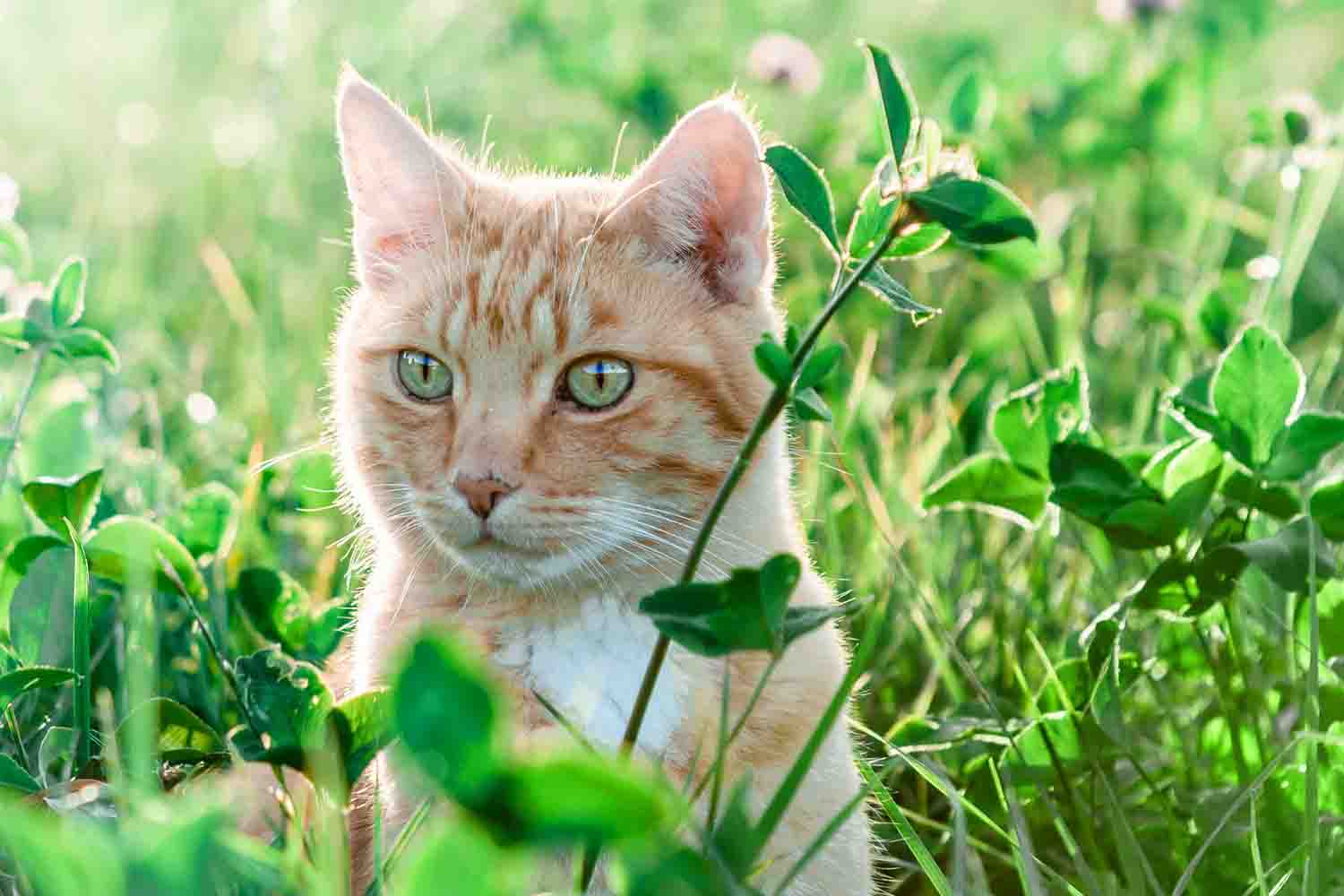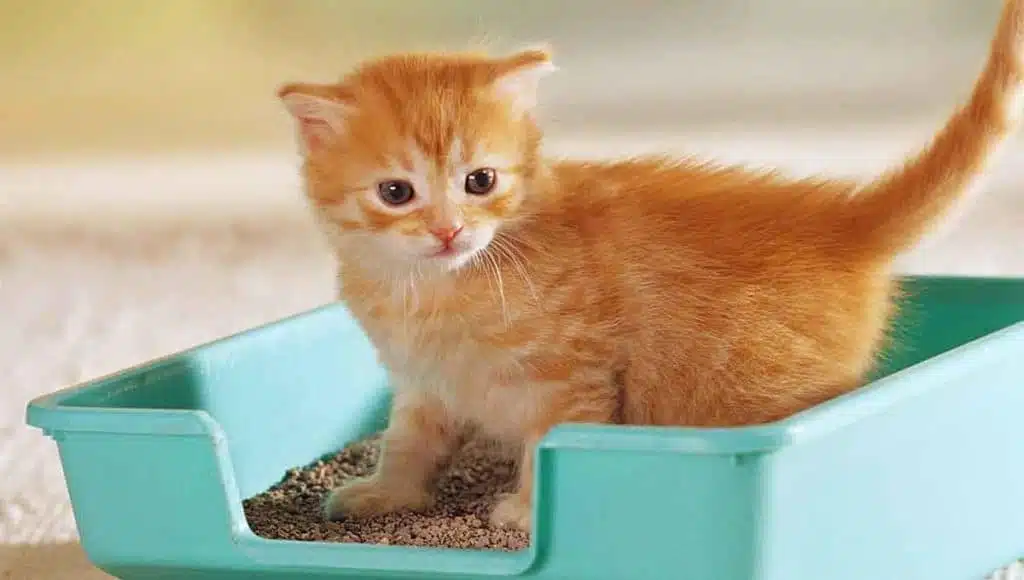Cat
How to Litter Train Your Kitten: 5 Basic Steps and Preventing Litter Box Problems
Litter training a kitten is one of the most important aspects of pet ownership. As litter box problems can cause stress and frustration for both cats and their owners, it’s important to take litter training seriously from the start. In this post, we’ll cover five basic steps in litter training your new kitten (or any cat), as well as some tips on how to prevent litter box problems in your household.
1. The right litter Box
The litter tray is a crucial component of litter training your kitten. It needs to be clean and dry, with low sides that allow the cat easy access in order for them to get in and out without any trouble. Litter trays also need an opening at the top that won’t have litter overflow into it – this helps prevent litter box problems by reducing waste build-up on the floor or outside of the litter box itself.
While cats are excellent at hiding their bathroom habits from humans, some cat owners prefer not to see the litter box. So, they opt for a litter box with covers and some go as far as getting an entire piece of furniture or a “litter box hider” just so it blends with its surroundings better. Your kitty needs enough room in the litter box to move around and find a good spot. A covered box, unlike an open-top one, limits their mobility and restricts where they can go to take care of business. The bottom line is your kitty needs to be able to safely step in and out of the box and do his job comfortably. Remember, as your furballs get bigger you need to reevaluate the size of the box.

2. Choosing the right kitty litter
Choosing the right litter, which is easy to clean and provides a solid barrier between litter and cats. There are several different types of litter to choose from – clumping clay, wheat-based (or alternative) litters, crystal or silica gel litter – but they all serve the same purpose: catching waste material while absorbing urine. However, some cats don’t like scented litters with odor control chemicals because they can be irritating to a cat’s sensitive nose; alternatively, litter made out of natural materials might not offer enough protection against odors for an indoor environment since these aren’t as effective at isolating smells.
If you’re worried about how to keep the litter box from smelling up your house, there are few options available. One, choose a low-tracking type of litter that won’t stick to their paws as easily. This will help prevent litter from getting everywhere in your home (or apartment). Secondly, the litter box needs to be scooped on a regular basis and should be changed every few months as litter becomes saturated with cat pee.
Choose whatever litter you feel most comfortable with – what’s important is that you use a clumping litter that has a low odour.
3. Choosing the right spot
Where should I put my cat’s litter box? It should be a place where that works for both you and your furry friend. Place your litter tray in an area where the kitty has access to it and doesn’t feel threatened or intimidated. If you live with other people, make sure everyone is on board with this litter training plan before deciding on a place for your new kitty’s litter box.
When you are limited in your living space, figuring out where to keep the litter box can add another challenge. Look for these conditions to find the best place
- Does it have a high traffic area? Don’t put litter box in high traffic areas because cats will not want to use it where there is a lot of activity.
- Away from loud and disruptive noises such as dishwashers or dryers running in the background, cats will usually show signs of being fearful
- Choose a spot with sufficient light
- It’s important not to put litter boxes too far away from areas where the pet spends time – if it’s inconvenient for them then they’re less likely to use it!
- It might be tempting but don’t try putting the litter box inside of cabinets or closets
- If you have any other pets in your household, it’s important to pay attention. Cats may not want their litter boxes near areas that another animal spends time – especially if those animals are predatory by nature!
Do not move your litter box around frequently, this will confuse your kitty. If you must move your litter box, be sure to do so gradually by moving it a couple of inches each day until it reaches the new spot.
4. Positive reinforcement
It’s important to use positive reinforcement when litter training your pet. Make sure that the litter box is in a place where they are comfortable and can easily access it without any problems, then reward them with something tasty! This will help reinforce their behaviour of using the litter box as it should be used.
What if my cat starts peeing outside of his litter box? It can be frustrating when you find your kitten squatting. Never punish them, because they won’t understand and will only learn to fear you. If your kitten is squatting in the wrong place, quickly take him or her back to their litter box with gentle encouragement and praise for doing what they were supposed to do this time!
If litter box problems persist, it’s important to call your veterinarian. There may be a medical issue preventing him from using the litter box. Litter box avoidance can also be caused by a litter that is of too high or low quality and containing scents or chemicals that make him uncomfortable. You might try switching litter types to see if this alleviates the problem.
5. Maintain good hygiene
Maintaining good litter hygiene is important for many reasons, but mainly so that your litter box doesn’t get smelly. Cleaning the litter box on a daily basis will help prevent odours as well as mask any that might already be there. If you have other animals in your home, it is advised that you clean their litter boxes more frequently because cats are fastidious and less likely to use an unclean litter tray.
- Scoop out the box twice a day (minimum) – It only takes a few minutes to accomplish this task and it will make your cat happy. You also get the opportunity to monitor your cats elimination habits, which can alert you of any health concerns sooner than later!
- Use the right litter scoop – it is important to make sure you get all the way down into the bottom of their tray and remove any clumps or waste that’s stuck in there. Cats have a keen sense of smell so even if just one little bit gets left behind, they’ll be able to tell right away!
- Right amount of litter in the box – Do not use too much litter in your cats’ tray, they prefer less than what we might think. Litter should be deep enough that litter sticks to the scoop but not so deep that it is spilling out of the litter box.
- Don’t forget to clean up urine stains outside of your cat’s litter tray with an enzymatic cleaner – this will help remove any lingering smells as well as prevent them from returning!

Litter train your Older Cat
If your cat has never been litter trained, chances are he/she has been an outdoor cat. This can be a challenge because he may not want to go inside the litter box. You’ll need patience and time in order for him/her to get used to it. However, most older cats can be litterbox trained in the same manner that you train a kitty to do his business, but with a little extra effort and changes.
- Litter tray – For cats that are a bit older, the litter box will not be unfamiliar territory. Cats have an intrinsic understanding of what it is for and their natural instincts should help them use it too!
- Cat Litter – Instead of commercial kitty litter, fill the litter box with outdoor soil. Once your cat starts using the litter box, gradually replace the soil with less and more of a type of cat litter (see above) to familiarize her with the new surface.
How do you know what your cat likes best? Try different types of litter to find out which one they prefer. Clumping and non-clumping, scented or unscented – there are a lot of options for the perfect kitty comfort!
So, now you have a litter trained kitten! Congratulations. It may not be glamorous work but it is worth the effort and we’re sure your new kitty will thank you for all their clean living in years to come. Remember these 5 steps when training your kitty. We hope this guide has been helpful to you and if there’s anything else we can help with please let us know
This blog post content has been brought to you by Allforpets.lk, please continue reading for a list of pet supplies we carry or visit our website at Pet Food Store | Pet Products Online Store Sri Lanka – Allforpets.lk
– Leashes with harnesses (for cats) – Cat trees/scratching posts












